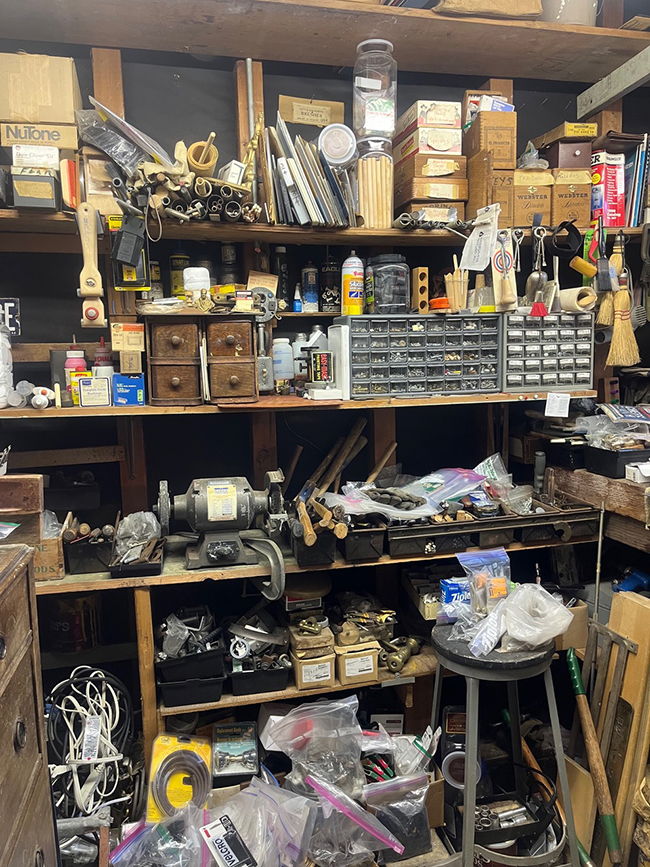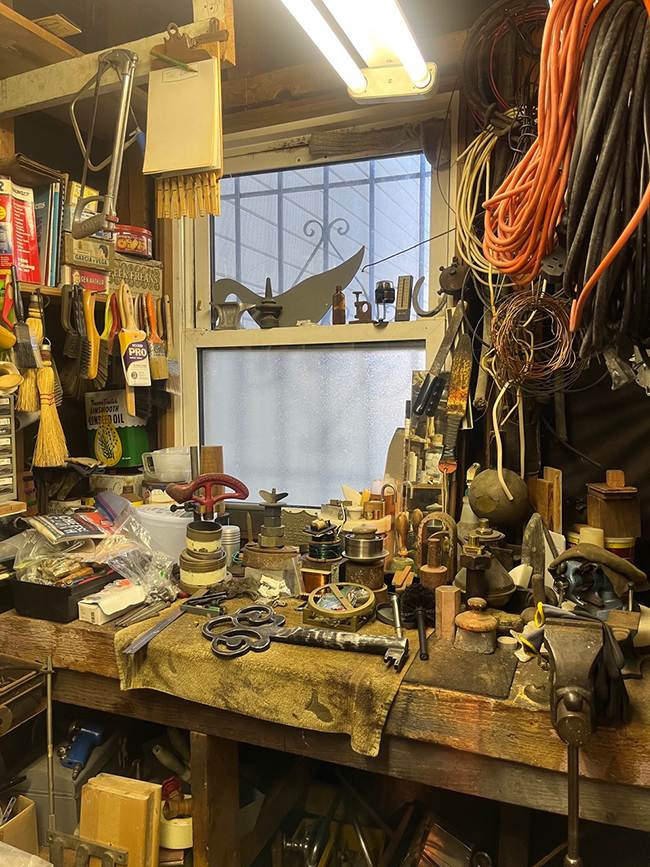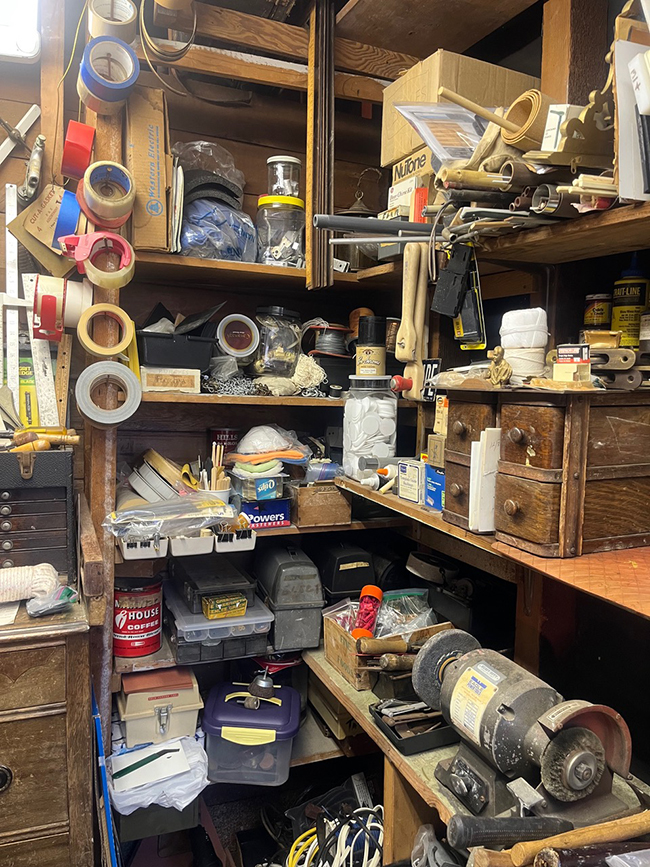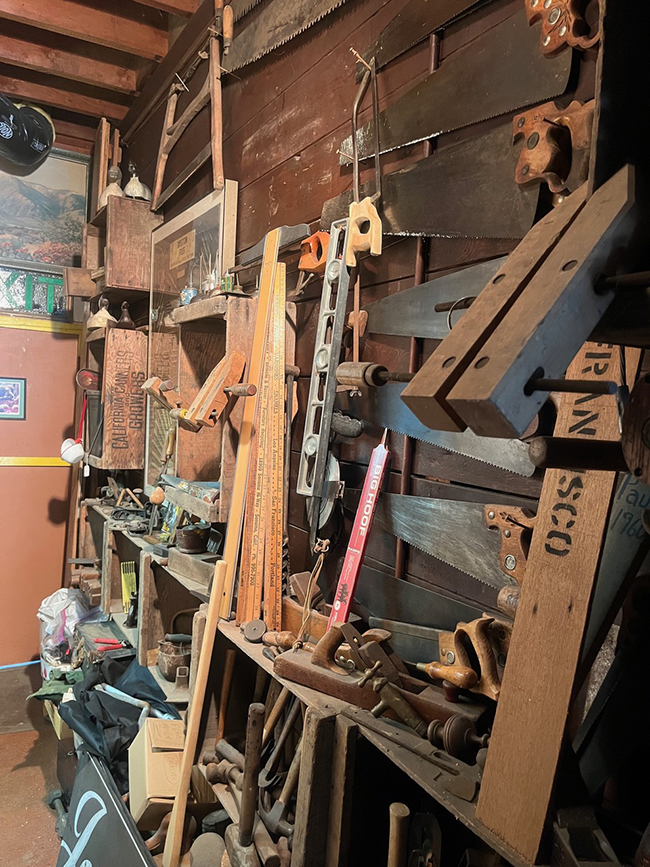

Growing up in St. Louis, Clint’s parents planted the seeds of his artistic inclinations by fostering a love for collecting, kitsch, and Americana. This early exposure laid the foundation for his weekly pilgrimage to local flea markets, where he continues to add to his collections of nostalgic blue-collar materials.
One of Imboden’s recent works is titled “Mo and Clint: An Unconventional Collaboration.” This series emerged from a collaboration with a San Francisco family seeking closure after the recent loss of a loved one, Mo. Drawn to challenges, Clint agreed to meet with the family at Mo’s unassuming house in the Avenues, blending seamlessly with its surroundings.


Mo’s sisters and a nephew guided Clint through the unassuming interior into a treasure trove of memories. The house, not cluttered but brimming with artifacts, told the story of Mo’s life lived with insatiable curiosity. From a framed collection of old padlocks, each with its original key, to salvaged Danish Mid-Century Modern dining chairs and a private bar sanctuary, Mo’s eclectic collections spoke volumes about the man they had lost.
The journey reached its zenith in Mo’s workshop—a haven of creativity and accumulation. Leaning against a wall were two colossal 6×6 foot plastic signs from a gas station, embodying Mo’s unrelenting pursuit of the extraordinary. Boxes of spools of thread hinted at the potential for artistic exploration, with the top one revealing large spools in a captivating shade of green.
For Clint, Mo’s collection was not just an assortment of possessions but an opportunity to breathe new life into a unique creation. The prospect of turning a fraction of Mo’s possessions into ten to twelve unique pieces, blending wall-mounted and free-standing works of various sizes, felt like a homecoming—a convergence of two kindred spirits, Mo and Clint, woven into the fabric of unconventional beauty.
Throughout the exploration, subtle nuances in the sisters’ expressions betrayed a sense of exasperation built up over the years. It was evident not so much in their words but in the way they spoke—a mix of resignation and affection for their late brother’s eccentricities. Mo’s collecting habits, a source of familial bemusement, were now transformed into a project that Clint was ready to embrace.
Imboden’s work goes beyond the ordinary, reflecting a deep understanding of the stories hidden in everyday objects. His journey from St. Louis to the Bay Area, from flea markets to Mo’s workshop, epitomizes the transformative power of art—a force that turns the ordinary into the extraordinary.

